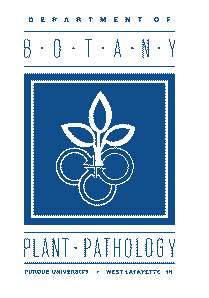
BP-5-W

Powdery mildew is a common disease of ornamental plants. It generally occurs in late summer or early fall, especially if the weather is cool and if night dews are heavy enough to remain on the plants during the morning. Trees, flowers, and shrubs most often affected are roses, snapdragons, African violets, kalanchoe, English ivy, zinnias, photinia. oak, lilac, and begonias.
The primary sign of powdery mildew are grayish white, powdery blotches on leaves stems and buds. Initially, powdery fungal growth will appear on the upper leaf surface of the lower leaves. Eventually the entire leaf may become covered with mildew growth. Once a plant is infected, the leaves turn yellow and drop prematurely. Flower buds might develop abnormally or fail to open. Mildew also weakens perennials and makes them more subject to winter injury.
Any one of seven closely-related fungi can cause powdery mildew. These fungi usually first attack leaves that are crowded and close to the ground. The spores are carried by air currents and germinate on the leaf surface. Liquid water on leaves inhibits spore germination. The fungus grows on the leaf surface but sends fine threads (haustoria) into the cells to obtain nutrients. From the time a spore germinates to the time new spores form may require only 48 hours. High humidity favors spore formation while low humidity favors spore dispersal.
Gardening Practices
High relative humidity at night and low relative humidity during the day with temperatures of 70 - 80F (conditions that prevail in spring and fall) favor powdery mildew. Maintaining conditions that favor rapid drying of foliage will help reduce disease incidence. Locate susceptible plants in open areas where they will not be crowded. Plants in shade are more prone to mildew than are those growing in sunlight. Prune to thin out any dense foliage; this will increase air movement and favor rapid drying of foliage. Avoid nightly sprinkling during August and September; instead, soak the soil as needed.

Common Name Trade Name ---------------------------------------------------------- myclobutanil Immunox propiconazole Banner thiophanate-methyl Cleary's 3336, Domain, Fungo-Flo thiophanate methyl + mancozeb Zyban, Duosan triadimefon Bayleton, Strike triforine Triforine, Funginex ----------------------------------------------------------
Figure 2. Fungicides for powdery mildew control
Powdery mildews are generally most severe on young. succulent growth which excessive nitrogen promotes. A balanced fertilization program is advisable.
In the fall, clean up and dispose of all mildew-infected plant debris. This will help reduce the amount of disease next year.
Chemical Control
Powdery mildew can occur any time throughout the growing season; spray susceptible plants with an appropriate fungicide at the first sign of mildew. Cover the upper and lower surfaces of the leaves thoroughly. Repeat the treatment at intervals of 7 to 14 days or as often as necessary to protect the new growth.
Note: Powdery mildew on most deciduous trees does little damage and does not require fungicides.
Before buying one of the listed fungicides. check the label to see if the plant type you wish to spray is listed; pesticides can be applied to only those plant types appearing on the label. Follow all label instructions regarding amounts of pesticide to use. methods of application. and safety warnings. Never use a pesticide without first reading the label.
REVISED 5/01
References to products in this publication is not intended to be an endorsement to the exclusion of others which may be similar. Persons using such products assume responsibility for their use in accordance with current label directions of the manufacturer.
It is the policy of the Purdue University Cooperative Extension Service, David C. Petritz, Director, that all persons shall have equal opportunity and access to its programs and facilities without regard to race, color, sex, religion, national origin, age, marital status, parental status, sexual orientation, or disability.
Purdue University is an Affirmative Action employer.
This material may be available in alternative formats.
1-888-EXT-INFO
http://www. extension.purdue.edu/extmedia